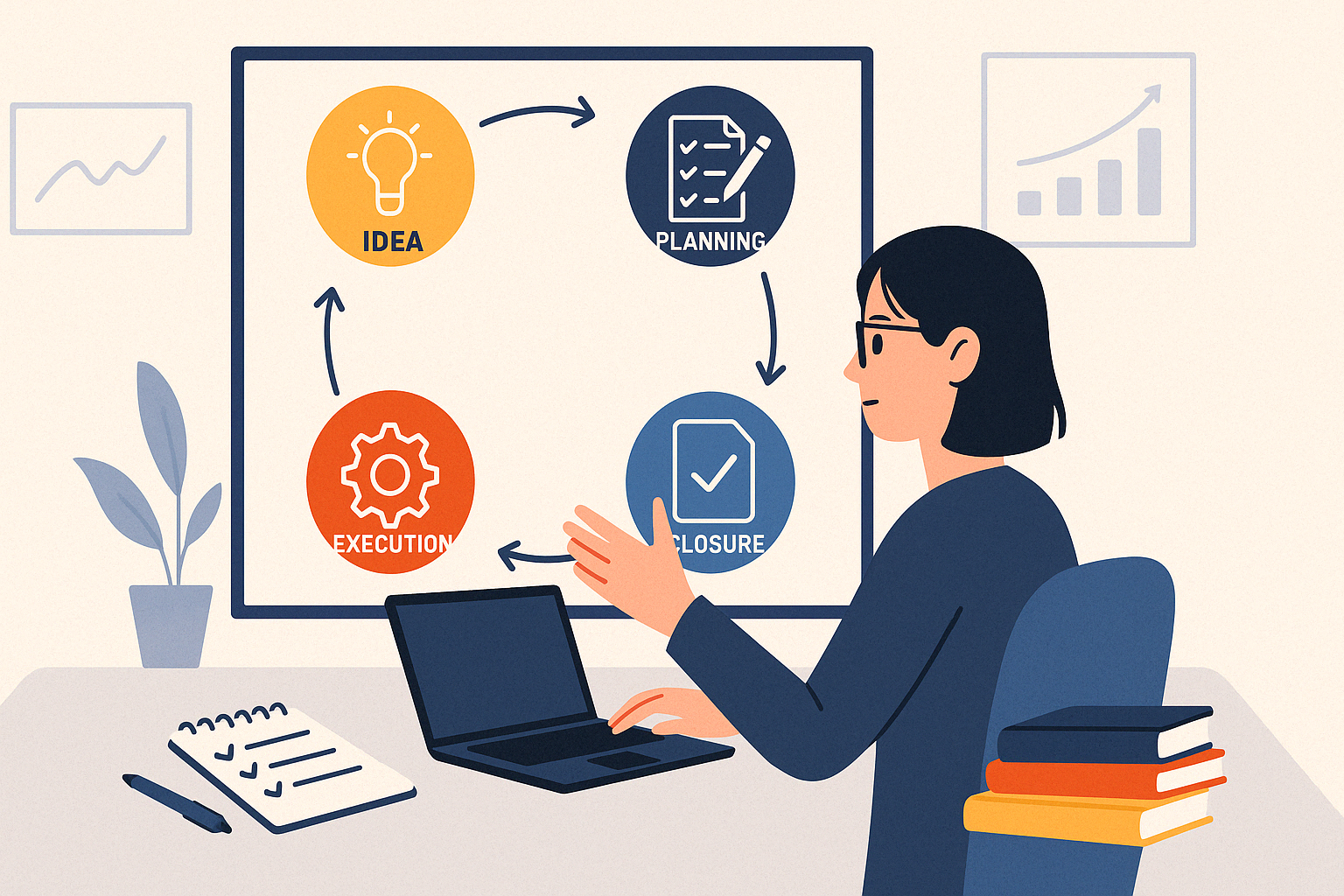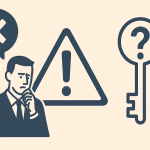
Here’s a clear breakdown of the Project Lifecycle from a business analysis perspective, along with a flowchart to visualize the process.
🧭 Project Lifecycle in Business Analysis (Step-by-Step)
🔹 1. Initiation Phase
- Business Need Identified
- Define Business Objective
- Feasibility Study
- Business Case Creation
- Project Charter Developed
- Stakeholder Identification
🔹 2. Planning Phase
- Project Plan Finalized
- Business Analyst Assigned
- Requirements Planning
- Stakeholder Analysis
- Communication Plan Setup
🔹 3. Analysis Phase
- Requirement Elicitation
(interviews, workshops, observation, surveys, etc.) - Requirement Documentation
(BRD, FRD, Use Cases, User Stories) - Requirement Validation
(review with stakeholders, confirm alignment) - Sign-off on Requirements
🔹 4. Design Phase
- Solution Design (High-Level & Detailed)
- BA supports Functional Design
- Wireframes / Prototypes (if applicable)
- System Architecture Design
🔹 5. Development Phase
- System/Software Development Begins
- BA supports clarification of requirements
- Change Requests Managed
🔹 6. Testing Phase
- Test Cases Created (based on requirements)
- System Integration Testing (SIT)
- User Acceptance Testing (UAT)
- BA assists in defect triage & validation
🔹 7. Implementation Phase
- Deployment to Production
- Training for End-Users
- Data Migration (if needed)
- BA may support rollout activities
🔹 8. Closure Phase
- Post-Implementation Review
- Lessons Learned
- Project Sign-off
- BA helps document learnings and benefits realization
🔻 Flowchart: Project Lifecycle with BA Involvement
[Business Need Identified]
↓
[Business Objective Defined]
↓
[Business Case Created]
↓
[Project Approval/Charter]
↓
[BA Planning Begins]
↓
[Requirement Elicitation]
↓
[Requirement Documentation]
↓
[Requirement Validation]
↓
[Design Phase]
↓
[Development Phase]
↓
[Testing Phase]
↓
[Implementation Phase]
↓
[Project Closure]


